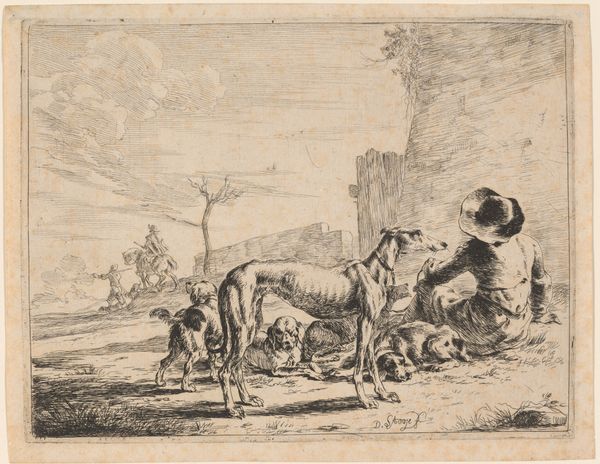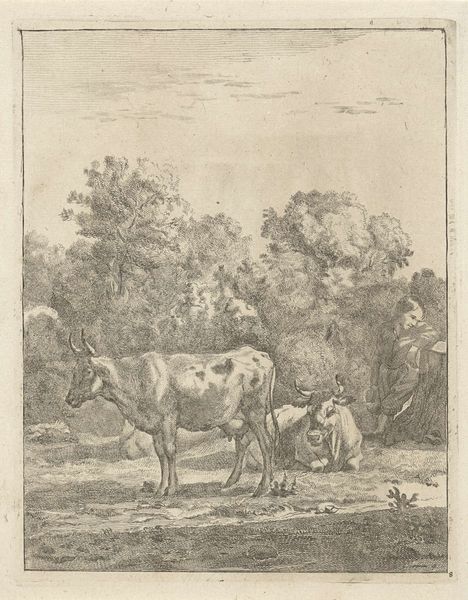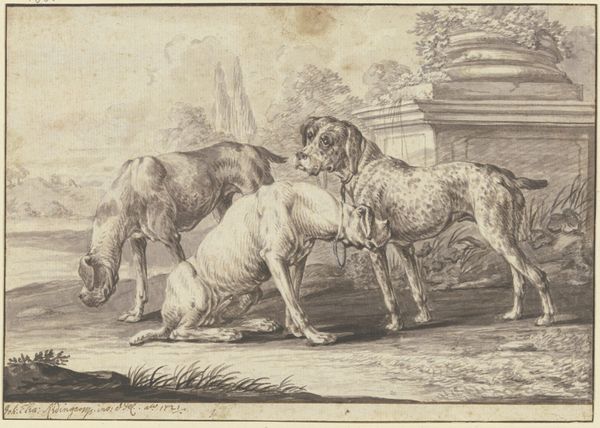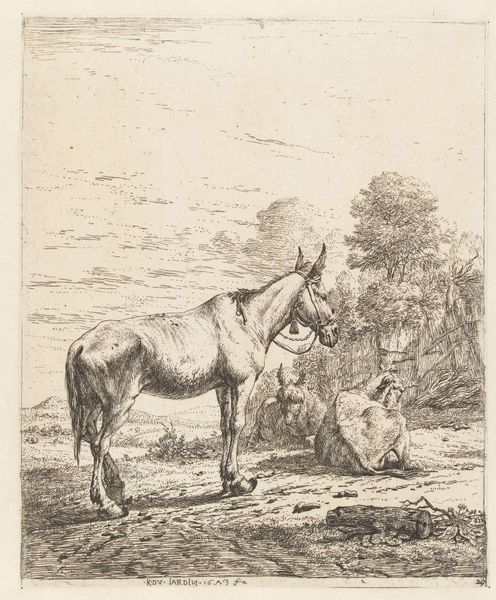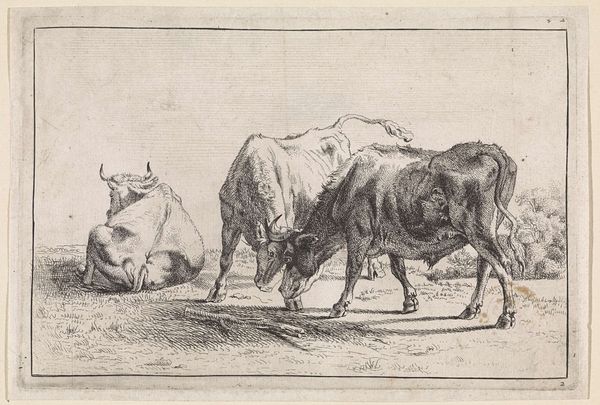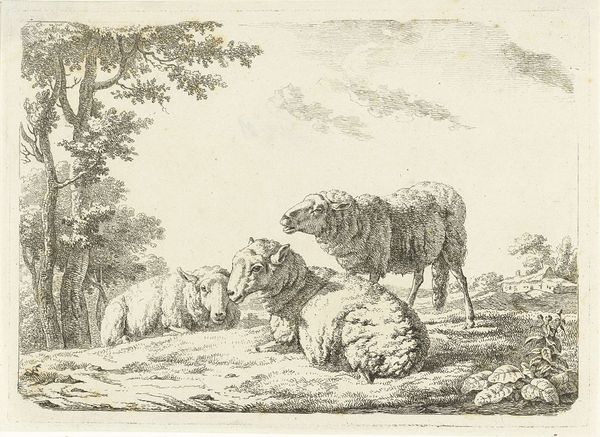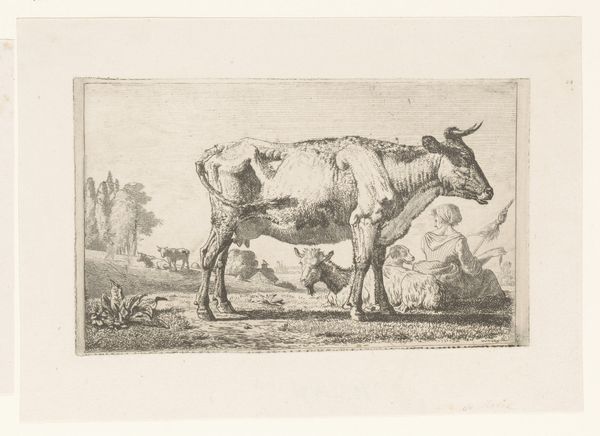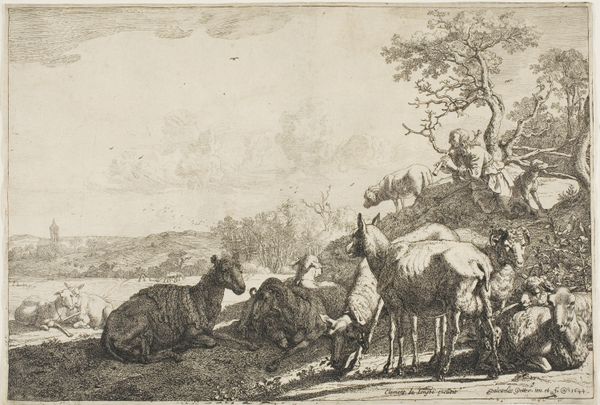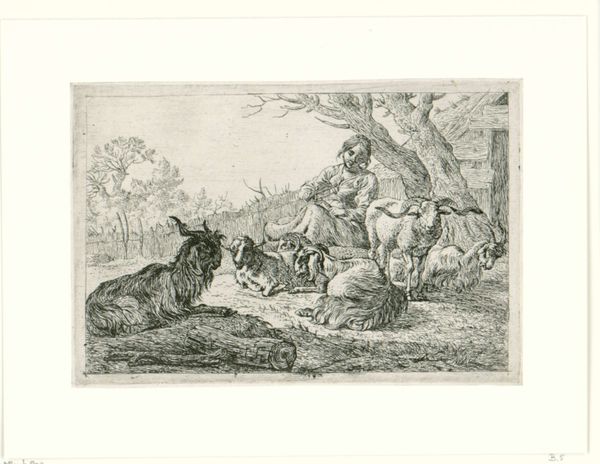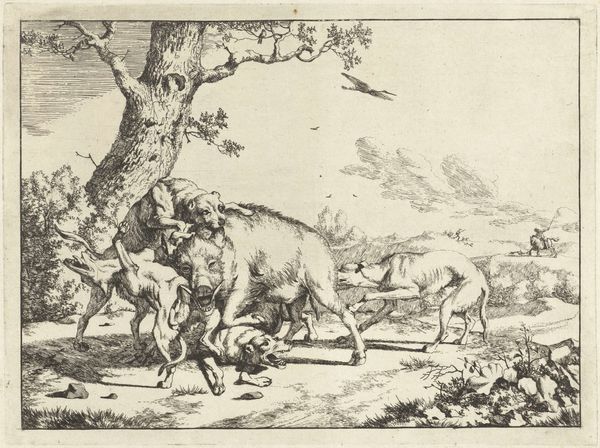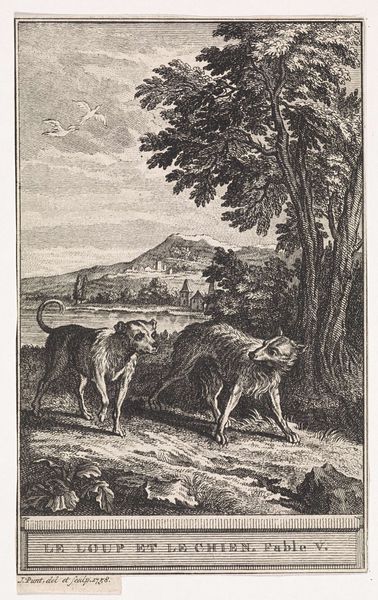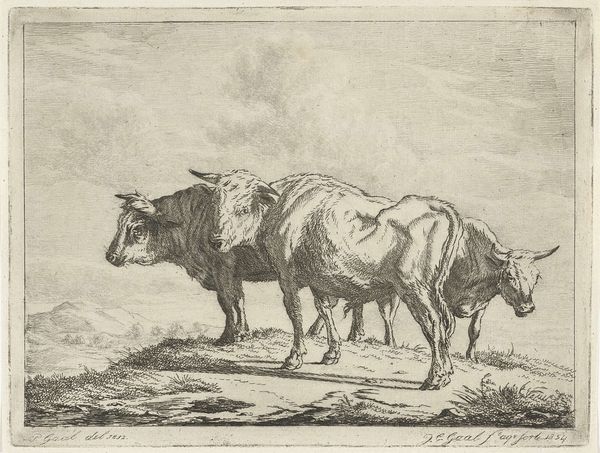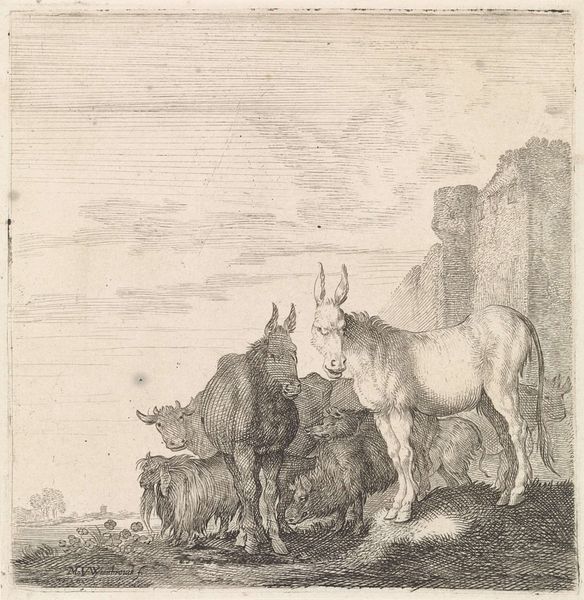
drawing, print, etching
#
drawing
#
animal
# print
#
pen sketch
#
etching
#
pencil sketch
#
dog
#
landscape
#
figuration
#
genre-painting
#
realism
Dimensions: height 183 mm, width 220 mm
Copyright: Rijks Museum: Open Domain
Editor: This etching, "Three Dogs at the Foot of a Column," dates from between 1806 and 1867 and is by William Bikker-Top. The texture of the dogs’ fur and musculature feels so real! What do you see in this piece, beyond the representational accuracy? Curator: I see a potent commentary on class and the natural world. Consider the column, a symbol of civilization and power, juxtaposed with the dogs, creatures often associated with the hunt and aristocracy. How might this juxtaposition speak to the societal structures of the time? Are these dogs emblems of privilege, positioned at the base of power? Editor: That's a fascinating interpretation. I was focusing on the dogs themselves. Curator: Look closer. The genre painting tradition often depicts animals to subtly reflect human behaviours or societal anxieties. During this period, were ideas about nature being tamed reflecting growing industrialization? The dogs are positioned casually, almost bored; are they reflecting a landed gentry losing its grip? How could a feminist lens, which deconstructs systems of power and challenges the idea of superiority of both humans over animals, help to question that power? Editor: So you are saying the artist is not simply showing three dogs, but possibly inviting viewers to question the status of both these dogs, and their owners? The setting by itself creates further questions to ask. Curator: Precisely. Art becomes a critical tool. By analyzing its components – composition, symbolism, context – we begin unpacking power structures. Considering intersectionality, we need to think about race too: how do the imagery of animals link to colonialism? Editor: This has opened my eyes to the complexities of this genre in the nineteenth century. I see the piece differently now. Curator: It is important that we interrogate beyond initial beauty and dig deeper! It reveals not just what's there but why.
Comments
No comments
Be the first to comment and join the conversation on the ultimate creative platform.
